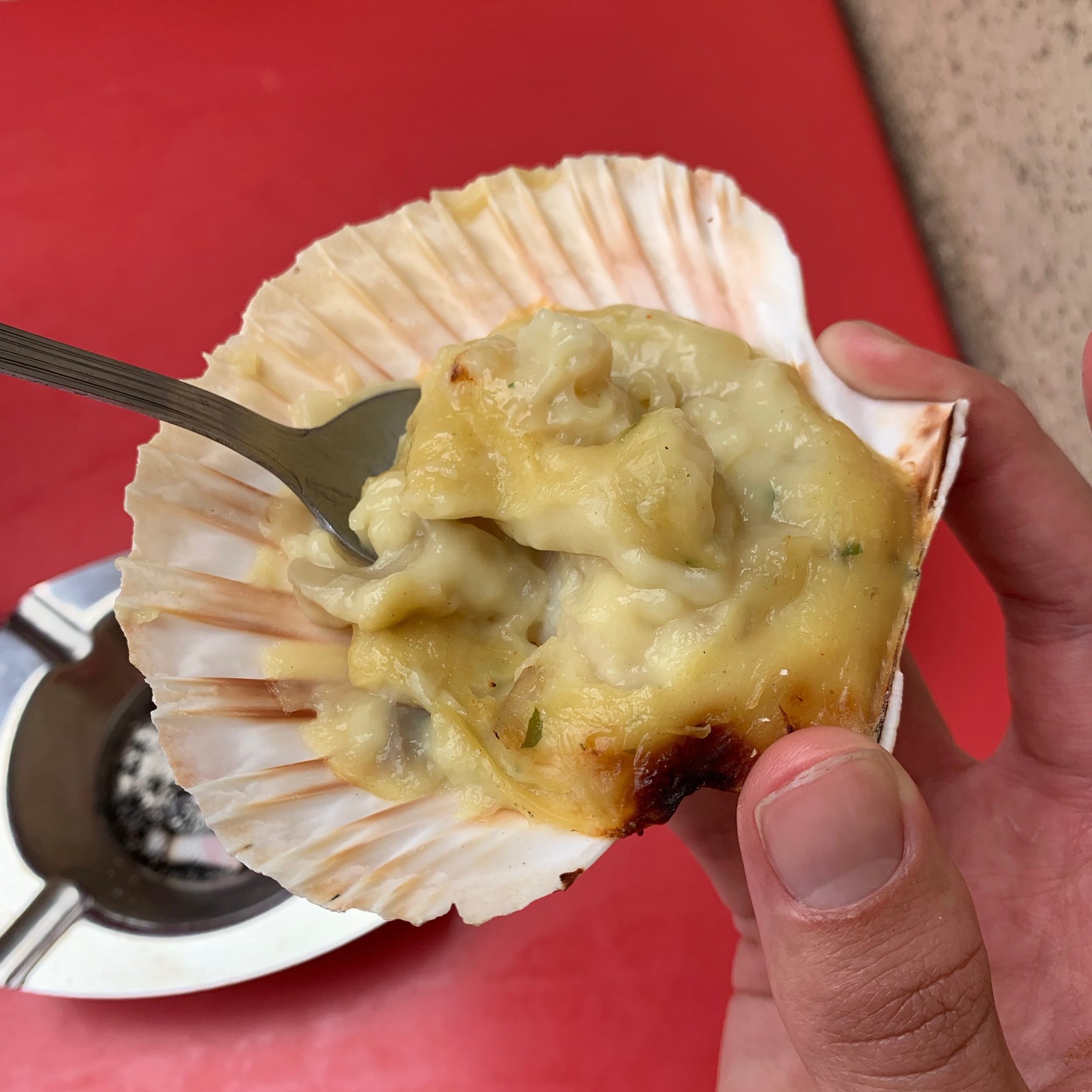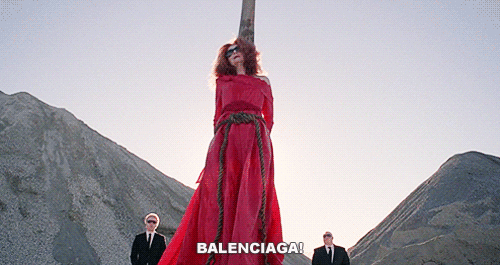Camino del Norte: San Sebastián to Getaria
I started to realize as I ascended out of San Sebastián that a major reason the Norte has so many changes in elevation is that you are constantly going in and out of small coastal villages. I slowly walked up, trying not to compare myself to the few other pilgrims I saw on the route. This was partially because that’s not the point of the Camino, and partially because I seemed to be going a lot slower. It turns out the competitive part of my brain doesn’t shut off just because I’m doing a pilgrimage.
In a stark contrast to the day before I was walking alone and it seemed as if I might be the entire day. I put on the Mamma Mia: Here We Go Again! soundtrack and walked. The coast was visible but misty, which had a certain atmospheric quality. I found myself crying, as if in these quiet moments alone I was finally allowing myself to grieve. In the months since my mother’s passing, I’ve been bogged down in funeral arrangements, paperwork, trust/estate work, packing up my house, planning my trip, and so many other tasks that kept me too busy to really sit with my feelings. The beauty of the scenery, the physical exertion, and ABBA was the perfect combination for me to start sobbing.
The route of the camino is filled with little yellow arrows to let you know you are walking in the right direction. These are either painted or sometimes are on more official looking plaques. I came across a pilgrim pitstop and was touched by the care people had put into supplying peregrinos with water. There’s a communal aspect of the Camino that’s been really amazing. Local people don’t seem to resent pilgrims at all and in fact will often wave or say “¡Buen Camino!” People are happy to give directions if they know the way (literally the translation of el camino).
Water, a stamp for my credential, and some words of encouragement.
The next few hours took me through farms and houses across Basque country until I arrived at a picturesque fishing village called Orio. I was pretty starving by this point so I ordered some pinchos at a local bar. I don’t eat pork so I had to keep pointing at various items saying “¿jamón?” while the server patiently told me yes or no. I thanked her in Euskara (Basque) with the phrase “Eskerrik asko.” As I’ve mentioned to some of the Basque people it’s a bit harder to say than “thanks” or “gracias.” I’ve had to be a lot more adventurous with seafood on this trip than I ever had before. I think growing up in Alaska had the unintended effect of turning me off to fish. One of my pinchos arrived in a clamshell which was pretty cute.
The fishing town of Orio, Spain
This stage (“etapas” in Spanish) of the walk is supposed to end in a surf town called Zarautz. I decided to keep walking further to the town of Getaria because of an albergue there that costs 15€ which is far less than any of the accommodations in Zarautz. This ended up being fortuitous because Getaria has a Balenciaga Museum. It’s a town of 3,000 people and yet it has this giant beautiful museum dedicated to Balenciaga. Also, Zarautz was full of people on holiday for Holy Week so I would not have been able to find a place to sleep had I tried.
The view of Zauratz before I descended into town. Looks like some pretty nice seaside golfing.
The surf town of Zarautz. There were surfers, but they were all in wetsuits.
Respect.
Even though I had just walked 15 miles I quickly changed into my havianas and made my way down a giant hill to the Balenciaga Museum before it closed. I truly fagged out a little when I found out this tiny town in Basque Country had a world class fashion museum. Architecturally the building is blend of old and new, and it feels somewhat out of place amongst the other centuries-old buildings. I wasn’t too familiar with Balenciaga’s work when I purchased my ticket but had a sense of his impact on the world of fashion. As many people reminded me on Twitter, Balenciaga was also made famous to a new generation by a moment in American Horror Story: Coven where Frances Conroy’s witch character is being burned at the stake and her last word is simply, “BALENCIAGAAAAAAAA.”
The museum started with a 23-minute video that could be played in one of four languages, Spanish, Castellano, Basque, and English. I didn’t realize when I selected English that it would subject the entire audience to English. I saw some women visibly confused before getting up to leave because they could not understand a single word. I thought it would just include English subtitles. I learned that Balenciaga was born in Getaria and worked in San Sebastián for many years where he was both inspired by and outfitted the aristocracy that vacationed there.
The museum traces Balenciaga’s entire career and has interactive elements such as an area where you can try on some of Balenciaga’s design. There’s also a neat section where you can feel swatches of fabrics to learn about some of the textiles Balenciaga used. What became through clear as I toured the museum was Baleniaga’s incredible sense of geometry and the female form as he bent various fabrics to his will to achieve a desired outcome.
Since all the grocery stores were closed for Good Friday I went out to eat some more pinchos. The pinchos on this trip have been a delicious seafood-heavy smorgasbord. I have to be careful because with my American appetite it’s easy to drop 12€-15€ without realizing it. There was a cute bartender who I felt like was probably gay but my gaydar is is not as accurate in Europe and is thus less reliable As I left the taverna I got to see a Good Friday procession. It featured Jesus on the cross, Jesus in a box, the virgin Mary, priests, and a full marching band.
The albergue ended up being a bit of a bust. 15€ may sound cheap for non-pilgrims, but on the Camino, it’s on the higher end. They didn’t provide sheets or breakfast and they stuffed all 20(?) of the pelegrinos into one small room.
The German man who slept on the bunk above me warned me about his snoring and he was not wrong. He wore ear plugs as he slept and I can only assume it was so he didn’t wake himself in the middle of the night. One learning I’ve had in my short time doing the Camino is that I would recommend that anyone who does it avoid Holy Week. There are more tourists, grocery store closures, and higher rates at most accommodations. You might see Jesus paraded through the town square but I don’t think it’s worth it.




















